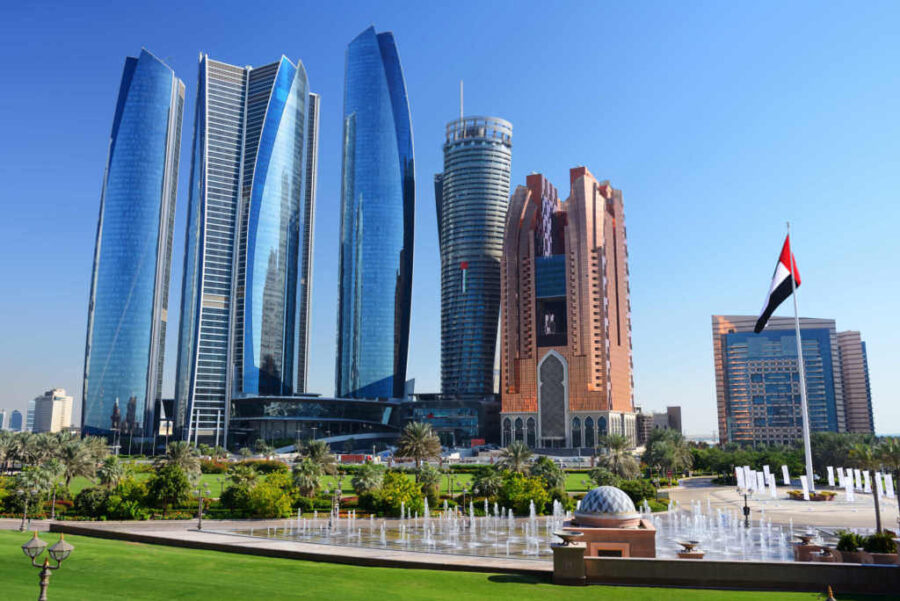the Q1’22 results for most of the banks in the UAE highlighted an increase in profitability, despite lower non-interest income.
This is according to global professional services firm Alvarez & Marsal (A&M)’s latest report on the United Arab Emirates (UAE) Banking Pulse for Q1 2022.
A&M’s UAE Banking Pulse examines data of the 10 largest listed banks in the UAE, comparing the Q1’22 results against Q4’21 results. The report assesses banks’ key performance areas, including size, liquidity, income, operating efficiency, risk, profitability, and capital.
The country’s 10 largest listed banks analyzed in A&M’s UAE Banking Pulse are First Abu Dhabi Bank (FAB), Emirates NBD (ENBD), Abu Dhabi Commercial Bank (ADCB), Dubai Islamic Bank (DIB), Mashreq Bank (Mashreq), Abu Dhabi Islamic Bank (ADIB), Commercial Bank of Dubai (CBD), National Bank of Fujairah (NBF), National Bank of Ras Al-Khaimah (RAK) and Sharjah Islamic Bank (SIB).
Potential asset quality deterioration risks
Asad Ahmed, Managing Director and Head of Middle East financial services at A&M said that “Rising oil prices, supportive government policies, revival signs in the real estate sector, and normalizing non-oil activity are expected to accelerate the UAE’s economy in the next quarter.
He noted that the International Monetary Fund (IMF) has revised the UAE’s gross domestic product (GDP) growth estimates for 2022 from 3.5 percent to 4.2 percent. “We anticipate domestic lending to grow on the back of revived economic activities, and NIM to improve as benchmark interest rates have increased by 50bp.”
Moreover, he said that deposits are expected to grow underpinned by the projected interest rate increase. However, he added, “There are potential asset quality deterioration risks, in the latter half of the year, when the Central Bank of UAE’s TESS scheme ends in mid-2022.”
The prevailing trend identified for Q1 2022
Here are the highlights of the Alvarez & Marsal report:
– The loan-to-deposit ratio (LDR) increased on the back of credit growth revival while deposits declined marginally. Aggregate L&A increased 2.8 percent QoQ in Q1’22 indicating a revival in credit growth led by the post-pandemic economic recovery. Meanwhile, deposits fell marginally by 0.1 percent QoQ during the period after four consecutive quarters of growth. Consequently, aggregate LDR increased from 82.1 percent in Q4’21 to 84.5 percent in Q1’22.
– Operating income for the top ten banks saw a significant fall, 6.4 percent QoQ, mainly due to a 35.9 percent QoQ decline in foreign exchange (FX) and investment-related income. However, this was partially offset by a higher net commission and fee income of +4.6 percent QoQ.
– Aggregate net interest margin (NIM) remained broadly flat at 2.05 percent in Q1’22 owing to the lower yields from the banks due to broader lower interest rate scenario. The yield on credit declined marginally by 5 bps QoQ while the cost of funds remained flat QoQ at 1.0 percent. Six of the banks have reported flat / contraction in NIM while the remaining banks reported marginal expansion.
– Cost-to-income (C/I) ratio increased by 90.0 bps QoQ to 34.4 percent as operating income of -6.4 percent QoQ, dropped at a higher rate compared to operating expenses of -3.8 percent QoQ. Half of the top ten banks reported deterioration in cost efficiencies mainly driven by FAB and ADCB.
– Cost of risk (CoR) improved for most of the UAE banks; as the aggregate CoR fell by 26.9 bps QoQ, primarily due to a significant decrease in net impairment charges. The total provisioning decreased to AED 3.5bn, -23.6 percent QoQ. This resulted from most of the banks reporting lower provisions due to economic improvements along with the extension of the Targeted Economic Support Scheme (TESS).
– Aggregate net profit for the UAE banks increased by 24.3 percent QoQ. However, excluding the AED 2.8bn gain on the sale of a stake in Magnati by FAB, the aggregate net profit decreased by 2.6 percent QoQ. This was primarily due to lower earnings from FAB, ex-stake sale, impacted by a decline in operating profit of -21.7 percent QoQ along with a +2.8 percent QoQ increase in operating expenses. Consequently, the aggregate return on equity (RoE) decreased marginally from 12.3 percent in Q4’21 to 11.9 percent in Q1’22, while return on assets (RoA) remained flat at 1.4 percent.








